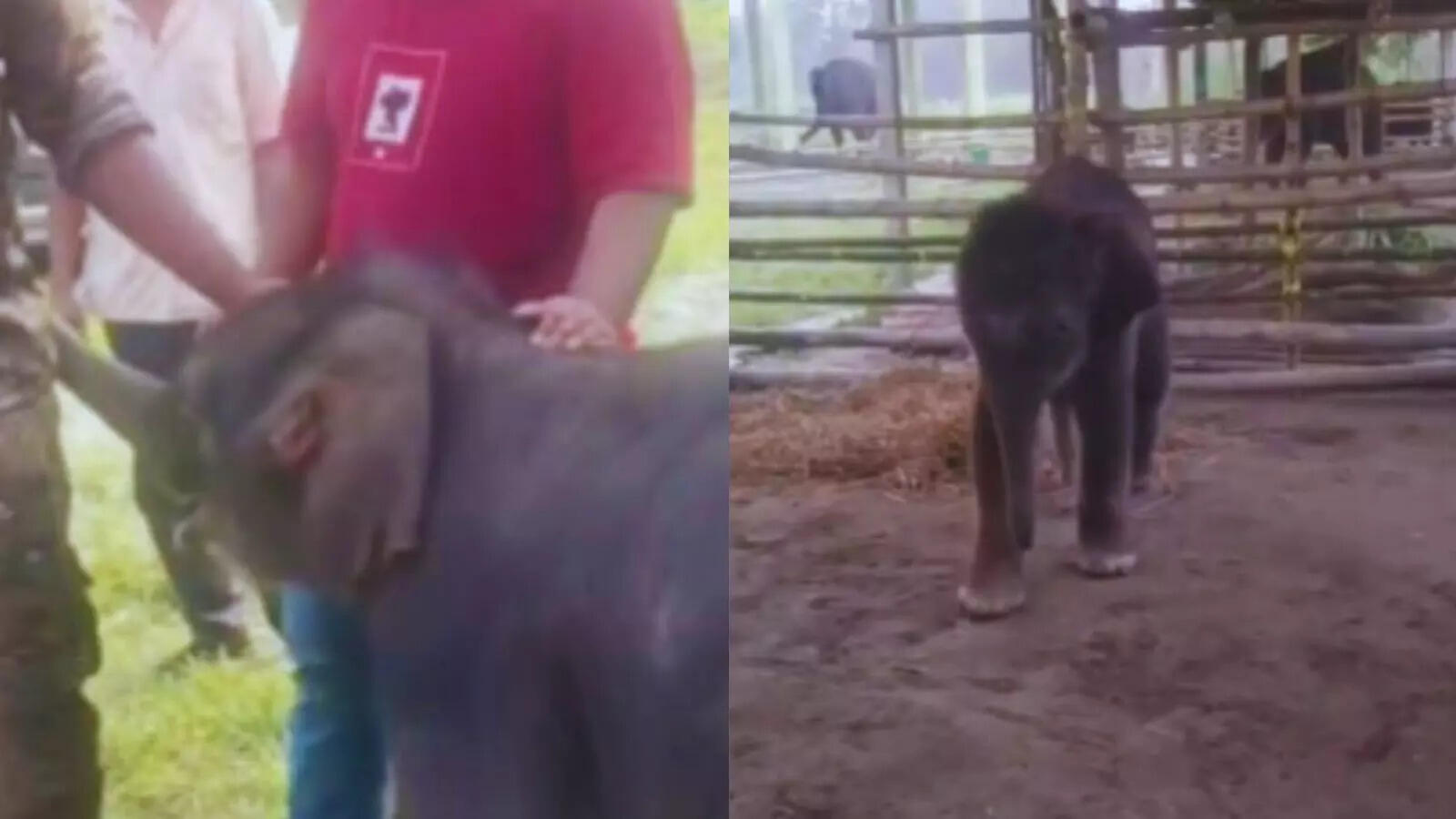Baby Elephant Abandoned by Mother Rescued in Flood, Viral Video Captures the Moment
A 15-day-old elephant calf in India narrowly escaped a deadly flood, only to face a heartbreaking twist, its mother rejected it. With survival at stake, forest officials stepped in, showcasing the delicate balance between human intervention and wildlife care .
Caught in strong floodwaters, the tiny calf, completely dependent on its mother, was at risk of drowning. At this vulnerable age, elephant calves rely on mother’s milk for nutrition and immunity. Forest officials acted quickly, carefully lifting the calf into a pickup truck to move it to safety, a process captured in a video shared by IFS officer Parveen Kaswan, highlighting the care and precision required.
Stress or trauma: Natural disasters like floods or sudden environmental changes can overwhelm elephants, sometimes leading mothers to abandon their young.
Health concerns: If a calf shows signs of weakness or illness, a mother may instinctively reject it to conserve her energy for healthier offspring.
Timing of separation: Calves separated from their mothers for extended periods risk being rejected upon reunion, as the mother may no longer recognize them.
Maternal rejection at such a young age can have severe consequences. The calf loses not only vital nourishment but also emotional support and essential social learning from its mother, both crucial for survival.
Nutrition: Milk formulas and hydration tailored to young elephants.
Medical attention: Continuous monitoring for injuries, infections, or stress.
Emotional support: Social interaction and stimulation to prevent behavioral issues.
Kaswan confirmed the calf is “healthy, active, and responding well,” demonstrating how skilled intervention can save young wildlife in critical moments.
The rescue video has gone viral, drawing thousands of supportive comments. Public engagement like this helps raise awareness about wildlife protection and the crucial role of forest officials.
This story reminds us that while nature is fragile, careful human intervention can make all the difference in giving vulnerable animals a fighting chance.

Caught in strong floodwaters, the tiny calf, completely dependent on its mother, was at risk of drowning. At this vulnerable age, elephant calves rely on mother’s milk for nutrition and immunity. Forest officials acted quickly, carefully lifting the calf into a pickup truck to move it to safety, a process captured in a video shared by IFS officer Parveen Kaswan, highlighting the care and precision required.
Why Mother Elephants Sometimes Reject Their Calves
Maternal rejection in elephants, though rare, can occur due to:Stress or trauma: Natural disasters like floods or sudden environmental changes can overwhelm elephants, sometimes leading mothers to abandon their young.
Health concerns: If a calf shows signs of weakness or illness, a mother may instinctively reject it to conserve her energy for healthier offspring.
Timing of separation: Calves separated from their mothers for extended periods risk being rejected upon reunion, as the mother may no longer recognize them.
Maternal rejection at such a young age can have severe consequences. The calf loses not only vital nourishment but also emotional support and essential social learning from its mother, both crucial for survival.
Expert Care at Pilkhana
After the failed reunion, the calf was taken to a Pilkhana, a specialized elephant care center. Here, it receives:Nutrition: Milk formulas and hydration tailored to young elephants.
Medical attention: Continuous monitoring for injuries, infections, or stress.
Emotional support: Social interaction and stimulation to prevent behavioral issues.
Kaswan confirmed the calf is “healthy, active, and responding well,” demonstrating how skilled intervention can save young wildlife in critical moments.
Emotional and Social Recovery
Elephants are deeply social and emotionally intelligent. Early separation from mothers can trigger stress, anxiety, and long-term behavioral effects. Care from trained specialists helps the calf regain stability, learn essential skills, and possibly reintegrate with other elephants in the future.The rescue video has gone viral, drawing thousands of supportive comments. Public engagement like this helps raise awareness about wildlife protection and the crucial role of forest officials.
This story reminds us that while nature is fragile, careful human intervention can make all the difference in giving vulnerable animals a fighting chance.
Next Story